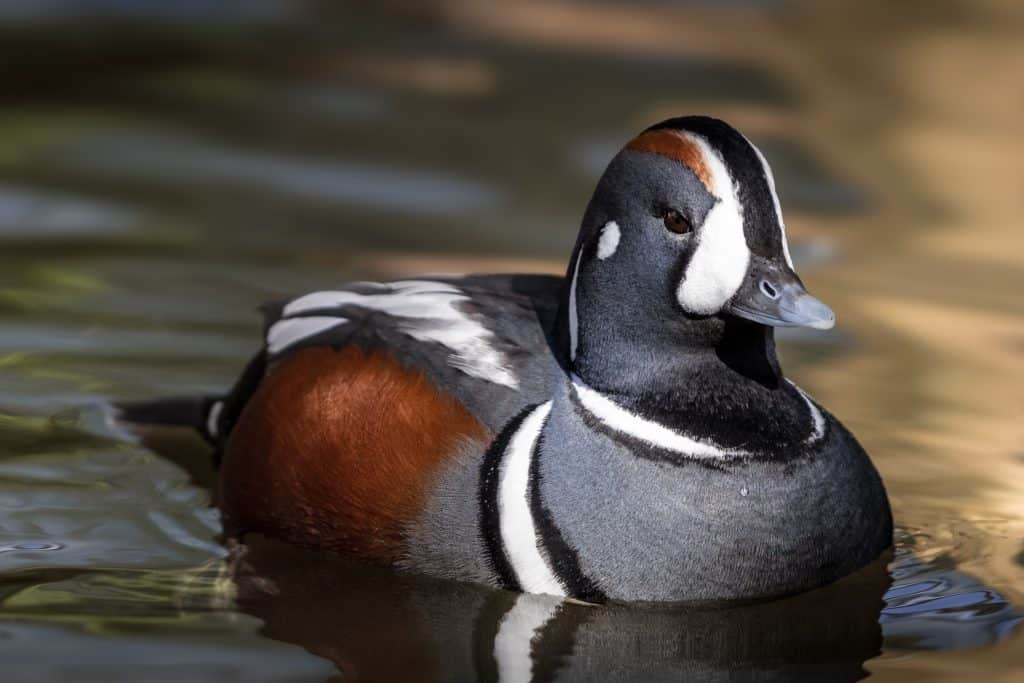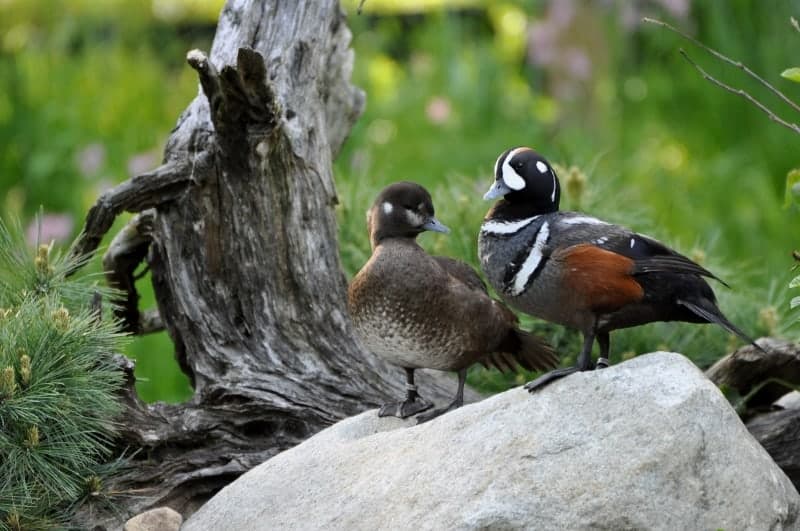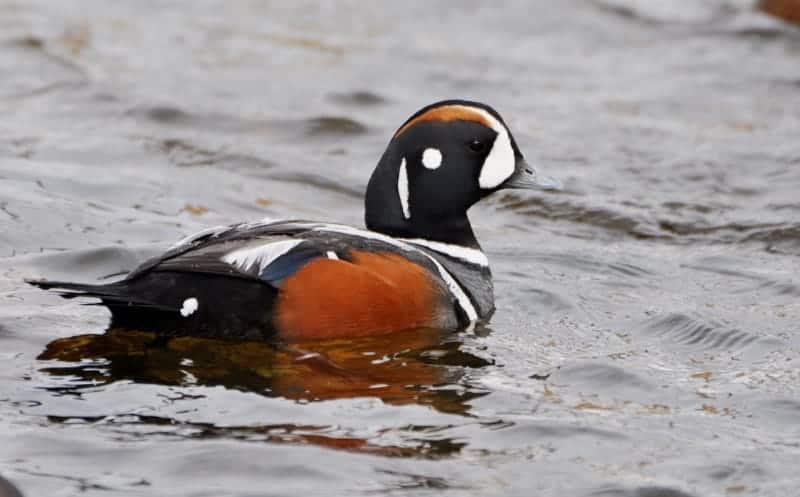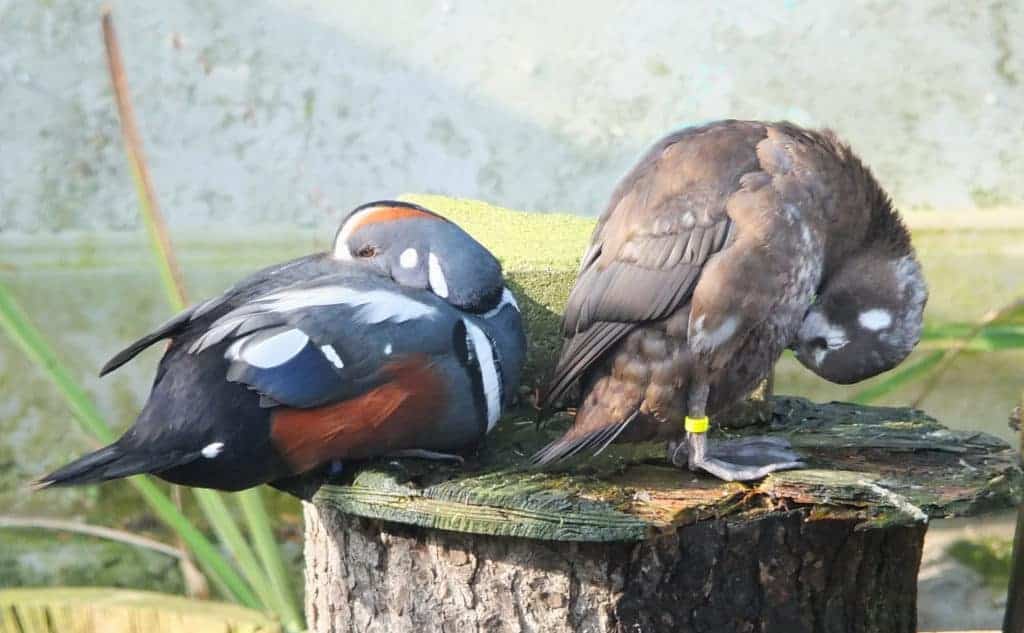Harlequin Duck

Harlequin Ducks were once the preserve of the waterfowl collection elite, but they have become more numerous and accessible in recent years. It is important to provide these ducks with clear, running water, which should preferably be a metre deep or more for at least half of the water area.

Histrionicus histrionicus
Almost impossibly perfect, the Harlequin Duck has a huge wow-factor. That outer plumage helps to make this duck exceptionally buoyant, trapping air in the downy feathers underneath. Breeding on swift torrents and rapid streams in rugged uplands, this sea duck is found around the northern rocky coastlines of North America, Greenland and Iceland. In winter it may be found in loose flocks further south and on the waters off Korea and Japan.
The name ‘Harlequin’ comes from a colourfully dressed character in Commedia dell’arte; Arleccino (Italian), and the scientific name from Histrio (Latin) — meaning actor. Harlequin Ducks make distinctly unduck-like squeaks; the pitch projects well over the sound of moving water. So ‘Sea Mouse’ and ‘Squeaker’ are two other common names for this duck.

Their diet is mostly molluscs, crustaceans and, in spring and summer, insects and their larvae and pupae. The availability of modern high protein rations has certainly helped us to maintain these ducks well, along with better knowledge of their needs.

Scanty and some close vegetation cover near water should be provided for nesting, and they will take to ground-level or slightly elevated boxes.
Harlequin Ducks take two or three years to be mature. They usually lay a single clutch from the end of April to June. 5–7 creamy-buff eggs are incubated for 27 to 30 days. The female incubates, guards and tends her brood alone.
It can be difficult to get ducklings feeding initially, so hand-rearing this species needs great avicultural skill.
Share this page